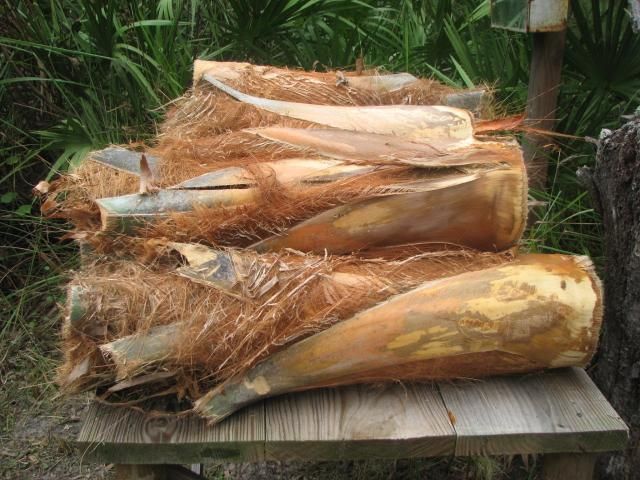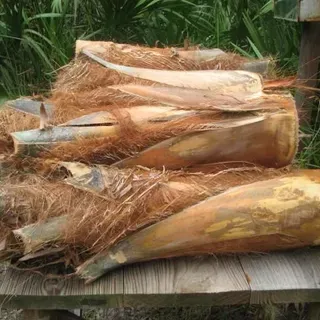Cabbage, Swamp—Sabal palmetto (Walt.) Lodd ex Schult. & Schult.f.1
Swamp cabbage is an old-time Florida cracker favorite vegetable obtained from the heart of the cabbage palm (S. palmetto), which is the official state tree of Florida. The plant is known by such other names as palmetto palm, sabal palm, and swamp cabbage tree.
The cabbage palm grows wild all over the state in such abundance that it is not cultivated for harvest as a vegetable. Cabbage palms grow as individual plants scattered across the horizon or thickly clustered together in hammocks. They are greatly valued as ornamental trees both for home and industrial landscaping. Most nurseries sell them in various sizes and shapes, deliver them, and set them in place.
Although the swamp cabbage tree grows wild, it is protected from indiscriminate cutting by its designation as Florida's state tree. Yet, large numbers of swamp cabbage are cut and sold each year, mostly as a prelude to land-clearing operations.

Credit: James M. Stephens

Credit: James M. Stephens
Description
The cabbage palm reaches a height of 80–90 feet at maturity, although most are 10–20 feet tall. It is at the 8–10 foot height (including fronds) that the swamp cabbage is cut from it. To remove the central core (heart), the outer leaf stems are cut away and the trunk is severed about 3 feet below the bud. Fronds have a woody base, called a boot, which wraps around the trunk.
At this stage, the untrimmed swamp cabbage weighs 10–15 pounds. At preparation time, boots are stripped from the 3-foot long section until the tender, closely wrapped central core is reached.
The central core is the part called swamp cabbage. It is cylindrical in shape, creamy white in color, and composed of layers of undeveloped boots (leaves) with the consistency, tenderness, and texture of regular cabbage. The trimmed edible product may weigh 5–10 pounds.
Use
Following trimming, the swamp cabbage may be prepared in various ways. The most popular old cracker way is to cut into thin slices like cole slaw and cook with meat seasoning until done. After the swamp cabbage is cooked, the white color changes to a grayish brown. The unique flavor is best described as smoky and wild. Traditional cooking often takes place outdoors over a camp stove or an open fire. Another popular method of preparation is to slice the cabbage and place the thin raw pieces into a tossed salad. A pinch of dates or spoonful of guava paste adds the final touch. This delightful dish is hearts of palm salad.
Remember, the cabbage palm is the state tree of Florida. Since the utilization of the palm for food necessitates the total destruction of the tree, authorization must be obtained before cutting.



